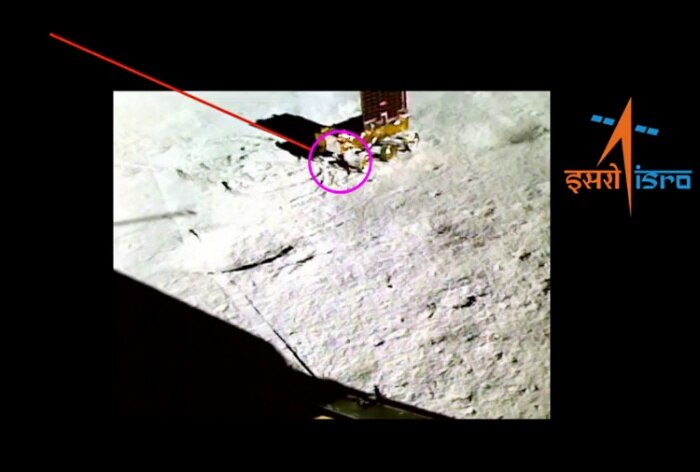Pragyan rover is equipped to use its scientific instruments to record what the lunar soil and rocks are made of in the south polar region where Chandrayaan-3 landed.

New Delhi: “Feels as though a child playfully frolicking in the yards of Chandamama” ISRO wrote as the national space agency shared another video of Pragyan rover being rotated on the Moon’s surface in search for a route to safely traverse the lunar landscape.
“The rover was rotated in search of a safe route. The rotation was captured by a Lander Imager Camera. It feels as though a child is playfully frolicking in the yards of Chandamama, while the mother watches affectionately. Isn’t it?,” the Indian Space Research Organisation (ISRO) quipped as they shared the video on X (formerly Twitter), showing the Pragyan rover being remotely manipulated from the command centre in Bengaluru in a bid to search for a safe path to avoid craters and rocks on the Moon’s surface.
Chandrayaan-3 Mission:
The rover was rotated in search of a safe route. The rotation was captured by a Lander Imager Camera.It feels as though a child is playfully frolicking in the yards of Chandamama, while the mother watches affectionately.
Isn’t it?🙂 pic.twitter.com/w5FwFZzDMp— ISRO (@isro) August 31, 2023
The rotation was captured by Vikram lander’s imager camera.
The Pragyan rover and Vikram Lander are literally in a race against time as they attempt to finish their mission experiments before the setting of the lunar night next week which would last for 14 Earth days.
Pragyan confirms sulphur on the Moon
Meanwhile, another instrument aboard the Pragyan rover has confirmed the presence of sulphur in the lunar region by deploying a different technique, ISRO said on Thursday.
The Alpha Particle X-ray Spectroscope (APXS) has detected sulphur, as well as other minor elements on the Moon, the Bengaluru-headquartered national space agency said in a social media post.
“This finding by Ch-3 compels scientists to develop fresh explanations for the source of Sulphur (S) in the area: intrinsic?, volcanic?, meteoritic?,……?” read the post.
The Laser Induced Breakdown Spectroscope (LIBS) instrument onboard the rover has already confirmed the presence of sulphur. Detailed scientific analysis of these observations are in progress.
The Pragyan rover and APXS
The 26-kg, six-wheeled, solar-powered Pragyan rover is equipped to use its scientific instruments to record what the lunar soil and rocks are made of in the south polar region where Chandrayaan-3 landed and it would also show how the readings contrast with that of the highland regions.
APXS instrument is best suited for in-situ analysis of the elemental composition of soil and rocks on the surface of planetary bodies having little atmosphere, such as the Moon, ISRO said in a statement.
It carries radioactive sources that emit alpha particles and X-rays onto the surface sample. The atoms present in the sample in turn emit characteristic X-ray lines corresponding to the elements present. By measuring the energies and intensities of these characteristic X-rays, researchers can find the elements present and their abundances.
APXS observations have discovered the presence of interesting minor elements, including sulphur, apart from the major expected elements such as aluminum, silicon, calcium and iron.
APXS has been developed by the Physical Research Laboratory (PRL), Ahmedabad, with support from the Space Application Centre (SAC) Ahmedabad, whereas UR Rao Satellite Centre (URSC), Bengaluru has built the deployment mechanism, it was stated.

Don’t Miss Out on the Latest Updates.
Subscribe to Our Newsletter Today!

